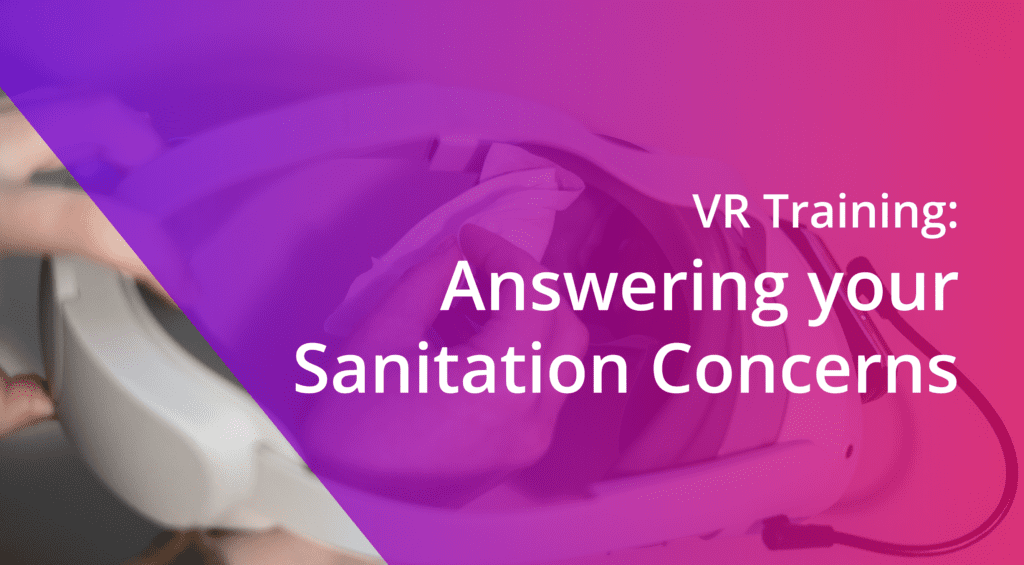In the ever-evolving landscape of the restaurant industry, adopting cutting-edge technology is key to staying ahead of the curve. Virtual Reality (VR) training has been a game-changer in various sectors, and now, it’s making waves in the world of restaurant management and staff training. Despite initial concerns about sanitation, VR headsets are designed to be cleaned and sanitized between each use, making them a safe and effective tool for training in the foodservice industry.
VR Across Industries
Before delving into the specifics of VR training for restaurants, it’s essential to recognize the widespread acceptance of VR technology in various industries. Healthcare professionals use VR for training purposes and even in patient care. The education sector incorporates VR to enhance learning experiences in school, and aerospace relies on it for simulation and training. If these critical sectors trust VR, there’s no reason why the restaurant industry shouldn’t follow suit.
The Sanitization Myth
One common misconception surrounding VR training in the restaurant industry is the perceived difficulty managing headset’s sanitation. However, VR headsets are designed with frequent cleaning in mind. The portion that comes in direct contact with the face is typically made of materials that are robust enough to withstand regular sanitation procedures.
Moreover, silicone covers, which are often used for additional hygiene, can be replaced and thoroughly cleaned between each use. This dual-layered approach ensures that the VR headset remains a safe and sanitary tool for training purposes.
Tailored Sanitization Practices
Understanding the concerns of restaurant chains, it’s crucial to establish tailored sanitization practices for VR headsets. Here are some guidelines to ease worries and ensure a hygienic training environment:
- Frequent Cleaning: Incorporate a regular cleaning schedule for VR headsets, focusing on the areas that come into direct contact with the user’s face. Alcohol wipes or sanitizing solutions recommended by the headset manufacturer can be used for effective cleaning.
- Replaceable Silicone Covers or disposable hygiene covers: Invest in replaceable silicone covers for the portion in contact with the face. These covers can be easily swapped out and sanitized between uses, ensuring a fresh and clean surface for each user. Although disposable ones are also available, we do not recommend them as silicone ones works perfectly and produce much less waste.
- UVC Sanitation: Integrating UVC LED disinfection solutions like the Cleanbox into your restaurant’s VR training protocols adds an extra layer of confidence for both management and staff. Those devices are designed to decontaminate the surfaces of devices, including VR and AR headsets, to healthcare-grade standards—achieving an impressive 99.999% effectiveness—in just a one-minute cycle. Using such a device demonstrates a commitment to providing a safe and hygienic learning environment while embracing innovative technologies that have proven effective in diverse industries.
- Staff Education: Train restaurant staff on proper VR headset handling and cleaning procedures. Emphasize the importance of personal hygiene and encourage employees to notify management if they experience any discomfort or notice issues with the equipment.
Benefits Outweigh Concerns
While concerns about sanitation are valid, it’s essential to recognize the numerous benefits that VR training brings to the table for restaurant chains. VR allows for immersive, hands-on training experiences that simulate real-world scenarios. This not only enhances the learning process but also ensures that staff members are well-prepared to handle various situations in a controlled environment.
In conclusion, the use of VR training in restaurants is a forward-thinking approach that aligns with industry trends and advancements. By adopting tailored sanitization practices and educating staff members, restaurant chains can confidently integrate VR into their training programs. The benefits of immersive and effective training experiences far outweigh the concerns, marking a positive step toward the future of the restaurant industry. So, put on those VR headsets and embark on a journey of innovation and excellence in restaurant training!

